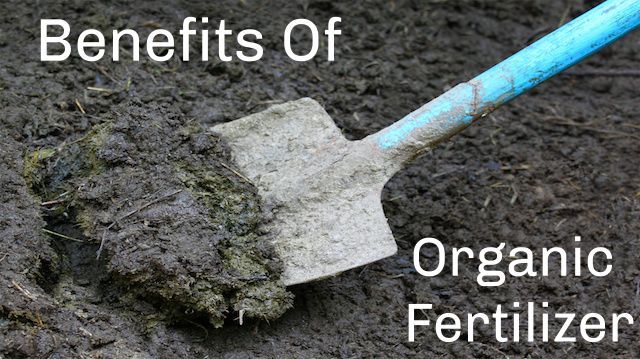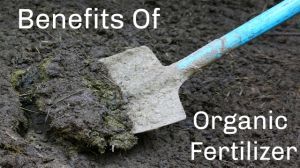
Despite popular belief, research conducted by the University of Michigan suggests that organic food production can in fact contribute substantially to both local and global food production systems.
Organic fertilizers are now more user-friendly and more readily available in supermarkets and gardening shops. They can even be produced for free by the most inexperienced home growers! The method of organic farming used will determine yield and environmental impact.
Here we will explore the types of organic fertilizers available to farmers and local food gardeners. We’ll reveal which are most affordable and release nutrients the fastest, as well as the impact organic fertilizers have on both soil quality and yield.
Why go organic?
Conventional methods of growing crops can produce up to 25 percent more food than organic methods for cash crops such as wheat and corn. Why then would anyone want to use organic fertilizer? Organic fertilizer consists of natural materials from the remains of a once-living organism or the by-products of an organism. Organic fertilizers provide a steady release of nutrients for a very long time.
Also, almost any organic material can be used as a fertilizer, though the effectiveness of each will vary considerably. Unlike inorganic fertilizers, living organisms eat organic matter in natural fertilizers, which helps break down nutrients for plants to consume. They also allow the soil to better hold moisture while promoting proper drainage. While chemical fertilizers can sometimes not work on dead soil, organic fertilizers help build nutrients that naturally replenish the soil, and healthier soil leads to greater nutrition.
Soil that is fertilized with inorganic materials will eventually die as commercial fertilizers contain only enough nutrients to keep the plants growing. As the soil begins to die, it is necessary to add even more fertilizer to maintain the same nutrient levels to preserve the plants.
A study published in the May 2002 edition of Science revealed that using organic fertilizer can cut down on the amount of fertilizer needed by 34 to 53 percent, while reducing the need for pesticide use up to 97 percent.
Commercial fertilizers are also filled with toxic chemicals that leak into the water supply. They can poison local wildlife, kill surrounding soil, and endanger the safety of those who live nearby. In fact, the National Institutes of Health published a warning on plant fertilizer poisoning due to high levels of nitrates.
You can become infected not only by accidentally consuming them, but also by regularly coming into contact with conventional fertilizers. If you are a farmer or like to spend time in your food garden, this could be a health and safety concern for you and your family.
If you touch conventional fertilizer, you may experience burning skin. If you consumed it by accident, you may experience an upset stomach, pain in your abdomen, dizziness or shortness of breath. Organic fertilizers, on the other hand, may sometimes smell putrid, but they replenish soil, feed small organisms, and are safe to use.
Precautions
If you decide to buy organic fertilizer from a store, the bag should state the percentage of three major nutrients: nitrogen, phosphate and potassium, in that order. Your soil’s natural levels of these nutrients will determine which fertilizer will be most beneficial.
When using organic fertilizer, keep in mind the types of crops you have planted. Some crops, such as wheat or corn, require more nitrogen than beans or fruit trees. Corn and wheat grown using conventional means produce 25 percent more yield than organic methods, while beans and fruits grown organically only result in a 5-percent potential loss. Synthetic nitrogen found in conventional products can cause dead zones in nearby bodies of water — a considerably high price to pay for greater yields.
Do not try to compensate for the loss in yield by adding more fertilizer. Too much fertilizer can be just as harmful to your plants as too little fertilizer. To know what your soil already has in abundance and what it lacks, conduct soil tests every few years. Soil tests will also let you know what crops will flourish in that environment, so you can better pair your crops with your soil and the right kind of fertilizer.
Types of organic fertilizers
Organic fertilizers can be separated into the following categories: plant by-products, animal by-products, biosolid based products, colloidal phosphate, and seaweeds.
- Plant by-products include things like alfalfa pellets or meal, corn gluten meal, cottonseed meal, or soybean meal.
- Animal by-products include bat guano, blood meal, bone meal, feather meal, fish emulsion, and fish meal and powder.
- Biosolids are things like animal manure, compost and worm-castings.
- Colloidal phosphate is a rock powder that is also known as soft phosphate.
- Seaweed-based fertilizers can be made from kelp meal, powder or liquid.
Pretty much any organic matter can be used as a fertilizer. You can buy a blend from your local gardening store or make it yourself. Your environmental impact, soil and crop yield will vary depending on the type of organic matter you use.
Meeting your soil’s nutritional needs
With such a large variety of natural fertilizers, which should you choose? Pre-made fertilizers can be bought as a blend of different types of fertilizers for optimization, or sold separately for individual plant and soil needs. The ph balance of the soil, moisture levels, and nutrient levels will determine which fertilizer will be best suited to your particular needs.
If your soil is low in one or a few of the vital macronutrients for plant growth, you will need to supplement your soil with fertilizers rich in those minerals. Bone meal, for instance, contains the highest concentration of phosphorus. Kelp and greensand are very effective fertilizers to treat potassium soil depletion, while hoof and horn meal contain high nitrogen levels. You can mix these blends yourself or search in stores or online for blends that will match the nutrients needed for your garden. To simplify the process of purchasing a good organic fertilizer, you can find generic mixes of natural fertilizers that contain adequate amounts of each vital nutrient in stores as well.
Most affordable
If you are worried about the cost of purchasing quality organic fertilizer, you can always make it yourself. No, you don’t have to have bat guano, blood or bone meal, fish emulsions, or any other type of exotic-sounding ingredient. As mentioned before, you can use almost any organic material to fertilize your crops. The most affordable option for making your own nutritional blend is to use what you have around you. This will vary depending on where you are and how you live. Some people can use herbivore animal manure, while others can use decaying fruits and vegetables.
To create a cheap, generic compost you will need both carbon-rich materials and nitrogen-rich materials. Carbon-rich ingredients can include dried leaves, shredded old newspaper, hay, cornstalks or straw. Nitrogen-rich ingredients include animal manure, plant clippings or decaying food. To make compost from this combination, you will need a space that is three feet long and three feet wide.
First, layer the carbon-rich components, followed by nitrogen-rich ingredients and then a layer of soil. Moisten the batter and repeat this process until the pile is roughly three feet high. Turn every few weeks until you see earthworms and a black, degraded compost pile. Add what has decayed to your crops. Whatever hasn’t completely decomposed can be used for your next compost batch. It’s a great way to be green, affordable and efficient with organic farming.
Quickest rate of released nutrients
The rate at which nutrients are released into the soil is determined by the length of time it takes microorganisms to break down the organic matter, the temperature of the soil, and the fertilizer used. Organic fertilizers can sometimes take more time for the nutrients to break down, which can inhibit a plant’s ability to receive the necessary principle nutrients to support adequate growth. In 1999, Utah State University studied the speed at which nutrients were released from each type of organic fertilizer.
Their research discovered that blood meal, fish meal, swine and poultry manure, seaweed extract, and wood ash release nutrients into the soil quicker than other natural fertilizers. In contrast, sawdust, straw and cornstalks were the slowest in releasing their nutrients. Research published in the September 2004 edition of Soil Use and Management revealed that the slow release of nitrogen in organic fertilizers can mitigate greenhouse gasses while still maintaining grass yields.
Growth stimulators
 Natural growth enhancers have been used for centuries to encourage a plant’s absorption of soil-bearing nutrients. Adrien Gallant, B.Sc. Agriculture, in association with Hydro Agri Canada, reported in the March 2014 edition of TURF and Recreation how biostimulants work, and which one works best at promoting plant growth.
Natural growth enhancers have been used for centuries to encourage a plant’s absorption of soil-bearing nutrients. Adrien Gallant, B.Sc. Agriculture, in association with Hydro Agri Canada, reported in the March 2014 edition of TURF and Recreation how biostimulants work, and which one works best at promoting plant growth.
In his research, Gallant found that the cytokinins in brown kelp contain the highest levels of plant growth hormone, or PGH. Kelp is sold as a dried meal or in extract form as a powder or liquid. Kelp also contains 60 trace elements that are needed in small quantities by plants. Kelp has a moderate release time and is rich in potassium. However, kelp is low in nitrogen and phosphorus, and is thus not an adequate replacement for those nutrients.
Organic fertilizers are ideal options for farmers and food gardeners who want to get the most out of their crops without using chemicals that can seep into their food, water and the local environment. While there isn’t a single fertilizer that is a perfect solution for every soil type, nutrient-deficiency and crop, there are natural fertilizers that can address each individual issue.
It is important to conduct soil tests every few years to maintain healthy soil and an abundance of produce. Understanding your particular soil’s needs can help you determine which fertilizer will provide the biggest bang for your buck. Although it can seem overwhelming at first, once you know what your soil needs, natural farming can be an affordable and rewarding way to provide your family with safe, healthy food.
—The Alternative Daily
Sources:
http://www.organicvalley.coop/fileadmin/pdf/organics_can_feed_world.pdf
https://ag.arizona.edu/pubs/garden/mg/soils/organic.html
http://www.ext.colostate.edu/mg/gardennotes/234.html#compost
https://extension.usu.edu/files/publications/factsheet/HG-510.pdf
http://www.scientificamerican.com/article/organic-farming-yields-and-feeding-the-world-under-climate-change
http://www.offthegridnews.com/survival-gardening-2/how-to-choose-the-best-organic-fertilizers
http://www.sciencemag.org/content/296/5573/1694.short
http://onlinelibrary.wiley.com/doi/10.1111/j.1475-2743.2004.tb00371.x/abstract
http://www.researchgate.net/profile/Shankar_Lawre/publication/263923492_Effect_of_Organic_Fertilizer_on_Growth_and_Yield_Components_in_Rice_%28Oryza_sativa_L.%29/links/0046353c55b46b9531000000.pdf
http://www.nlm.nih.gov/medlineplus/ency/article/002841.htm
http://www.greenmountaincompost.com/2011/02/homemade-versus-store-bought-what%E2%80%99s-the-difference
http://www.rodalesorganiclife.com/garden/worlds-most-fragrant-flowers
http://www.greenmountaincompost.com/2011/02/homemade-versus-store-bought-what%E2%80%99s-the-difference
http://thenogstoreusa.com/uploads/golfcourse_biostimulants_whitepaper.pdf

